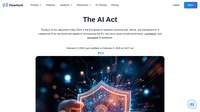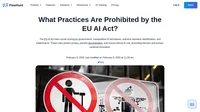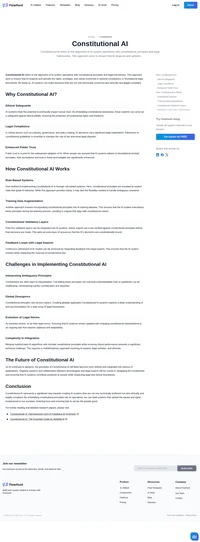What Are AI Oversight Bodies?
AI Oversight Bodies are structured entities or organizations tasked with monitoring, evaluating, and regulating the development and deployment of Artificial Intelligence (AI) systems. These bodies aim to ensure that AI technologies are used responsibly and ethically, safeguarding against potential risks such as discrimination, privacy infringements, and lack of accountability in decision-making processes. They play a crucial role in establishing and enforcing guidelines, standards, and regulations to align AI practices with societal values and human rights.
Key Functions of AI Oversight Bodies
1. Regulatory Compliance and Risk Management
AI Oversight Bodies establish frameworks and guidelines to ensure AI systems comply with existing laws and ethical standards. They assess risks associated with AI deployment and provide recommendations for mitigating these risks. The National Institute of Standards and Technology (NIST) and the European Union’s General Data Protection Regulation (GDPR) are examples of frameworks that guide AI governance. According to S&P Global, AI regulation and governance are improving rapidly but still lag behind the pace of technological development, emphasizing the need for solid governance frameworks at both the legal and company levels to manage risks effectively.
2. Ethical Guidelines and Best Practices
These bodies develop ethical guidelines and best practices for AI development and usage. They focus on transparency, accountability, and fairness to prevent algorithmic discrimination and ensure responsible governance. The involvement of interdisciplinary experts helps shape these guidelines to cover diverse perspectives and societal impacts. As S&P Global notes, addressing ethical challenges through governance mechanisms is essential for achieving trustworthy AI systems. This involves creating adaptable frameworks that accommodate the evolving nature of AI technologies.
3. Transparency and Accountability
AI Oversight Bodies promote transparency in AI decision-making processes and hold developers accountable for their systems’ actions. They mandate the disclosure of how AI algorithms function, enabling users and stakeholders to understand and challenge AI-driven decisions when necessary. Transparency and explainability are crucial, especially with complex algorithms like those found in generative AI, to maintain public trust and accountability.
4. Public Trust and Confidence
By ensuring that AI systems operate within ethical boundaries, oversight bodies help build public trust. They provide assurance that AI technologies are used for the common good, aligning with societal values and respecting civil rights. As highlighted by S&P Global, AI governance must be anchored in principles of transparency, fairness, privacy, adaptability, and accountability to effectively address ethical considerations and enhance public confidence in AI systems.
5. Continuous Monitoring and Evaluation
AI Oversight Bodies engage in ongoing monitoring and evaluations of AI systems to ensure they remain compliant with ethical and legal standards. This involves auditing AI systems for biases, performance, and adherence to established guidelines. Continuous monitoring is vital as AI technologies rapidly evolve, posing new risks and challenges that require proactive oversight.
Examples and Use Cases
1. Privacy and Civil Liberties Oversight Board (PCLOB)
The PCLOB is a model oversight body focused on reviewing AI systems used in national security. It ensures that these systems do not infringe on privacy and civil liberties, providing transparency and accountability in government AI applications.
2. Corporate AI Ethics Boards
Many corporations establish internal ethics boards to oversee AI initiatives, ensuring alignment with ethical standards and societal values. These boards typically include cross-functional teams from legal, technical, and policy backgrounds. According to S&P Global, companies face increased pressure from regulators and shareholders to establish robust AI governance frameworks.
3. International and National Regulatory Frameworks
Regulatory frameworks like the European Union’s AI Act and the United States’ AI governance policies provide guidelines for responsible AI usage. These frameworks categorize AI systems by risk levels and set requirements for their development and deployment. As noted by S&P Global, several international and national governance frameworks have emerged, providing high-level guidance for safe and trustworthy AI development.
Use Cases
1. Risk Management Frameworks
AI Oversight Bodies utilize risk management frameworks to identify and mitigate potential risks associated with AI systems. This involves continuous assessments throughout the AI lifecycle to ensure systems do not perpetuate biases or cause harm. S&P Global emphasizes the importance of developing risk-focused and adaptable governance frameworks to manage AI’s rapid evolution effectively.
2. Algorithmic Discrimination Prevention
Oversight bodies work to prevent algorithmic discrimination by ensuring AI systems are designed and tested for fairness and equity. This includes regular audits and updates to AI models based on evolving societal norms and values. Addressing issues of bias and discrimination is a key ethical concern highlighted in AI governance discussions.
3. Consumer Protection
These bodies protect consumers by ensuring AI systems used in various sectors, such as healthcare and finance, adhere to ethical and legal standards. They provide guidelines for the safe and responsible use of AI technologies. Consumer protection involves ensuring AI systems are transparent, accountable, and designed with human-centric considerations.
Challenges and Considerations
1. Rapid Technological Advancements
AI technologies evolve rapidly, posing challenges for oversight bodies to keep pace with new developments and potential risks. Staying updated with the latest AI trends and techniques is crucial for effective oversight. As noted by Brookings, dealing with the velocity of AI developments is one of the significant challenges for AI regulation.
2. Global Standards and Consistency
Establishing globally applicable standards for AI governance is challenging due to varying legal and ethical norms across countries. Collaboration among international bodies is necessary to ensure consistency and harmonization of AI governance practices. As highlighted by S&P Global, international cooperation is vital to address the complexities of AI governance.
3. Resource and Expertise Constraints
Oversight bodies often face limitations in resources and technical expertise required to effectively monitor and evaluate AI systems. Investing in skilled personnel and technological infrastructure is essential for robust AI governance. Ensuring that oversight bodies have the necessary resources and expertise to address AI challenges is crucial for effective governance.
What Practices Are Prohibited by the EU AI Act?
Discover prohibited AI practices under the EU AI Act, including bans on social scoring, manipulative AI, and real-time biometric systems.



